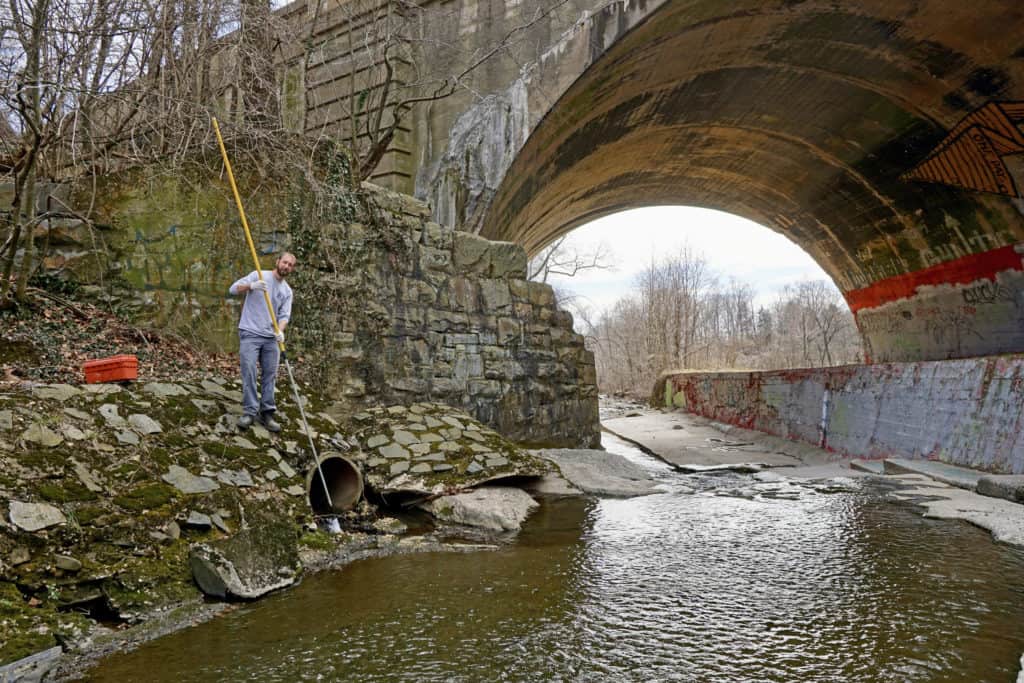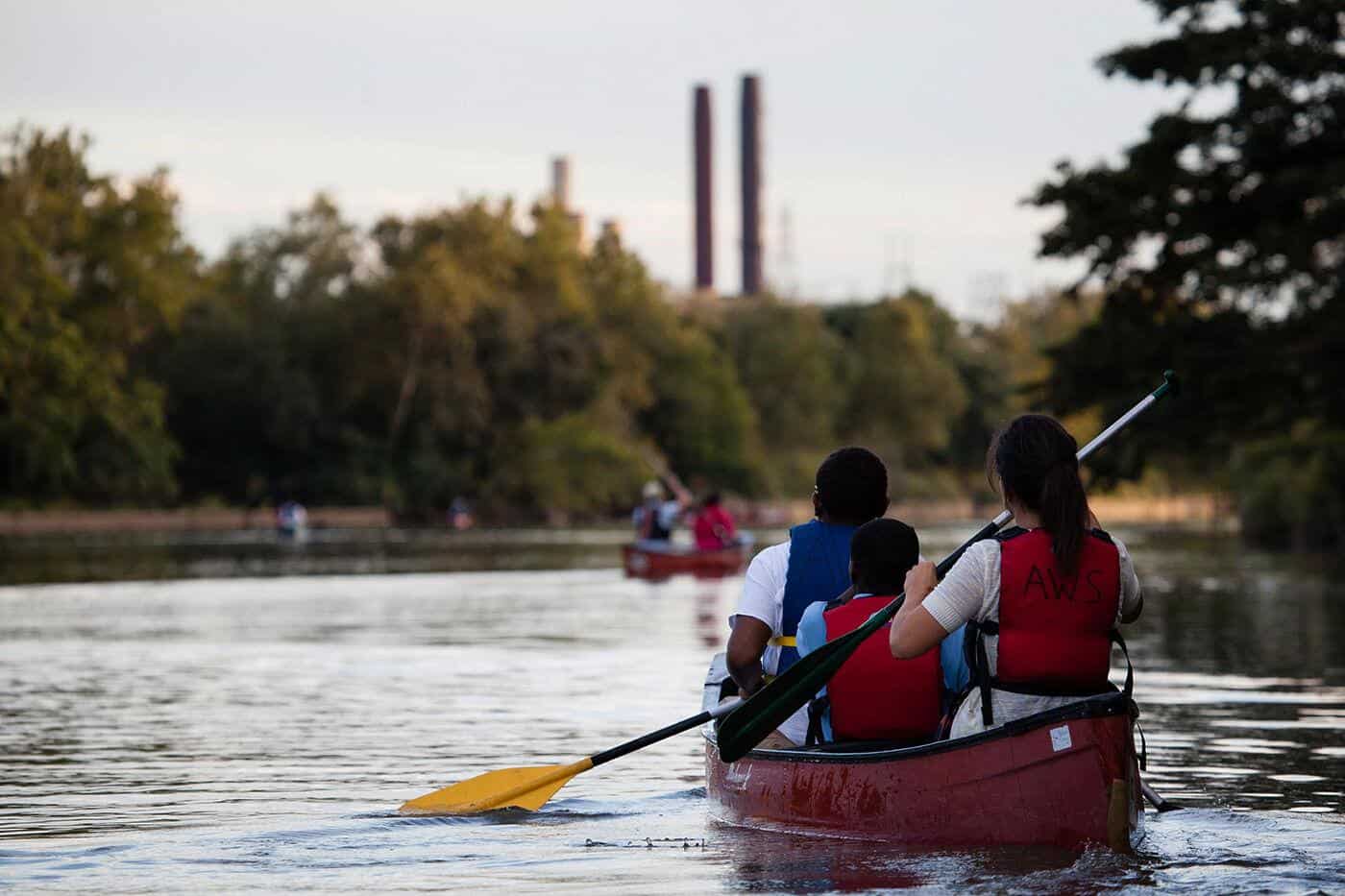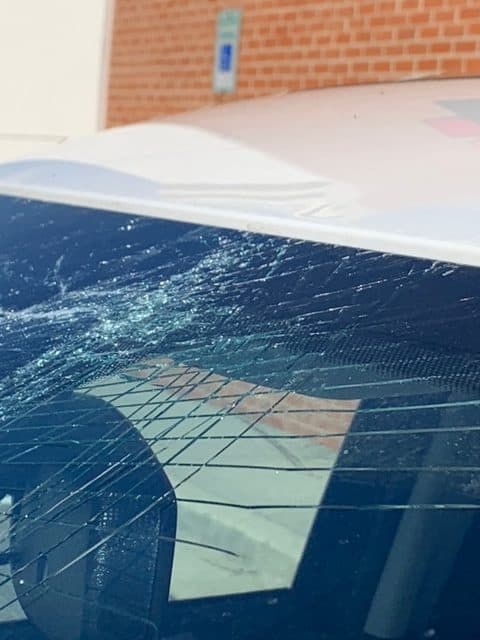Baltimore has just released its Harbor Heartbeat, a “restoration report card” for the Baltimore Harbor. And there’s cause for optimism: bacteria levels in the water have remained relatively low for the second straight year.
Baltimore City Dept. of Public Works Pollution Control Analyst Matthew Cherigo checks for sewage leaks. Photo: Casey Merbler, Healthy Harbor Initiative Project ManagerThe Waterfront Partnership of Baltimore’s Healthy Harbor Initiative (HHI) puts out the Harbor Heartbeat, with the help of partners across the Baltimore watershed,. The report “takes a snapshot of water quality, environmental restoration projects and infrastructure repairs,” explains HHI Director Adam Lindquist.
The 2017 Harbor Heartbeat saw a surprisingly dramatic drop of fecal bacterial levels in Baltimore’s streams and harbor. The lower bacteria levels indicate less sewage has spilled into waterways— a good thing all around. The Healthy Harbor Initiative didn’t know if that year’s data were part of a larger trend, or just an anomaly.
In 2018, HHI says, the fecal bacteria levels continued to stay at the same low level. Says Lindquist, “Again, two years is not a trend, but we know that the City and County are spending millions on sewer repairs and it is possible that we are beginning to see the results of that work.”
The encouraging 2018 bacteria levels seemed improbable, since Baltimore saw repeated sewer overflows due to a record-setting year for rainfall. Baltimore got a staggering 71 inches of rain last year, compared to the average of 42 inches. All that rain overwhelmed city and county sanitary sewed pipes, causing the extra water flow to discharge into streams and the Harbor.
According to the Harbor Heartbeat, “The Maryland Department of the Environment estimates 260 million gallons of rainwater mixed with sewage spilled into city and county waterways in 2018, compared to 20 million gallons in 2017.”
Despite that huge increase in sewage spills, the 49 sites monitored for fecal bacteria didn’t show a spike in bacteria levels. Some experts believe the large quantity of rain may have diluted the stormwater and sewage, helping to flush it out of the streams and Harbor.
HHI is hopeful that another year of low bacteria levels will indicate a larger trend towards restoring the Harbor.
To read the entire Harbor Heartbeat report, including all of the indicators experts looked at, and portraits of a dozen different employees and volunteers who are working to restore the Baltimore Harbor, click here.
-Meg Walburn Viviano




